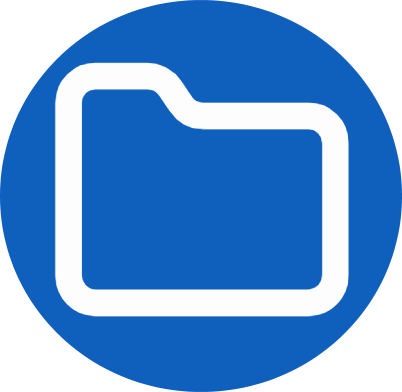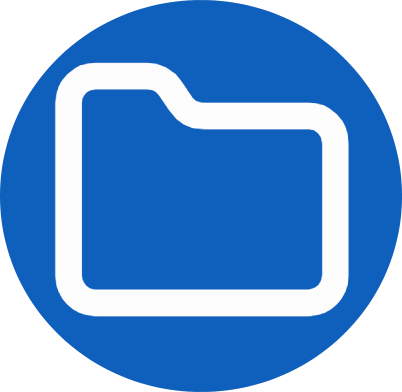Overview
Creating a directory with DirectoryEasy is simple and straightforward. In just three steps—choose language, choose type, and complete the form—you’ll have a fully functional directory ready to customize and launch.Getting Started
After you sign in to DirectoryEasy, navigate to:You can create either a Standard (product/service-oriented) or Business (location-oriented) directory. Don’t worry—you can customize all fields later regardless of which type you choose.
Required Fields
Before you begin, know that only these fields are required to create your directory:Name
Your directory’s public name
Tagline
Short descriptive line for marketing
Subdomain
Your DirectoryEasy subdomain
Categories
At least one category with one subcategory
Three-Step Creation Process
Step 1: Choose a Language
Select the language for your directory interface and content.Multilingual Support
DirectoryEasy supports 22+ languages, making it easy to create directories for any global audience.Popular languages include: English, Spanish, French, German, Italian, Portuguese, Dutch, Polish, Russian, Japanese, Chinese, Arabic, and many more.
Step 2: Choose a Directory Type
Pick the directory type that best matches your use case:- Standard Directory
- Business Directory
Product/Service-OrientedPerfect for directories focusing on:
- SaaS products
- Digital tools
- Software services
- Online platforms
- Tech products
- Logo
- Pricing information (lowestPrice, pricingModel)
- Demo link
- Coupons and offers
- Operating hours
- Business phone
- Location map
Don’t stress about this choice! You can customize which fields are enabled or disabled later in the Fields tab. This just sets convenient defaults.
Step 3: Complete the Configuration Form
The creation form is organized into tabs for clean configuration. You can return and edit any setting after creation.Configuration Tabs
General Tab
Configure your directory’s basic information and appearance.Name (Required)
Name (Required)
Your directory’s public name that appears everywhere.Examples: “SaaS Directory”, “NYC Restaurant Guide”, “Tech Tools Hub”
Tagline (Required)
Tagline (Required)
Short descriptive line shown in hero and marketing areas.Examples:
- “Discover the best SaaS tools”
- “Your guide to NYC dining”
- “Find your next favorite tool”
Subheading (Optional)
Subheading (Optional)
Longer introductory text that appears below the tagline.Example: “Browse hundreds of verified tools, compare features, and find the perfect solution for your needs.”
Button Texts
Button Texts
Hero Button (Optional)
Hero Button (Optional)
Images
Images
Upload visual assets for your directory:
- Logo: Your brand logo (appears in header/footer)
- Favicon: Small icon for browser tabs
- Hero Image: Large background image for your homepage hero section
Active Status
Active Status
Toggle your directory’s visibility:
- Active: Directory is live and accessible
- Inactive: Directory is hidden (useful during setup or maintenance)
SEO Tab
Optimize your directory for search engines and social sharing.1
SEO Title
The title that appears in search engine results and browser tabs.Best practice: Keep it under 60 characters, include your main keyword.
2
SEO Description
The description that appears in search engine results.Best practice: 150-160 characters, compelling and keyword-rich.
3
SEO Keywords
Comma-separated keywords relevant to your directory.Example: “saas tools, software directory, business tools, productivity apps”
4
SEO Image
The Open Graph image used when your directory is shared on social media.Recommended size: 1200x630 pixels
Social Tab
Connect your social media profiles to display throughout your directory.Supported Platforms
Add profile links for any of these platforms:Popular: Twitter/X, Facebook, Instagram, LinkedIn, YouTubeTech/Community: GitHub, Discord, Reddit, Medium, TelegramVisual: TikTok, Pinterest, SnapchatThese links may display in your footer or header depending on your selected theme.
Domain Tab
Configure your directory’s web address.- Subdomain (Required)
- Custom Domains
Your free DirectoryEasy subdomain:
your-directory.directoryeasy.netRequirements:- Lowercase letters, numbers, and hyphens only
- Must be unique across DirectoryEasy
- Can be disabled later if using custom domain only
saas-tools.directoryeasy.netnyc-restaurants.directoryeasy.nettech-directory.directoryeasy.net
Fields Tab
Control which listing fields are enabled and required for submissions.This directly controls:
- What submitters must provide in the listing form
- What’s validated during CSV import (required fields must be mapped)
Always Required Fields
Core Fields
- Name: Listing title (always required)
- Categories: At least one category selection (always required)
Optional Standard Fields
Toggle these on/off based on your directory type:| Field | Standard Default | Business Default | Use Case |
|---|---|---|---|
| Logo | ✓ Enabled | ✗ Disabled | Product/brand identity |
| Lowest Price | ✓ Enabled | ✗ Disabled | Pricing information |
| Pricing Model | ✓ Enabled | ✗ Disabled | Subscription/one-time/free |
| Demo Link | ✓ Enabled | ✗ Disabled | Try before you buy |
| Coupons | ✓ Enabled | ✗ Disabled | Discount codes |
| Operating Hours | ✗ Disabled | ✓ Enabled | Business schedules |
| Business Phone | ✗ Disabled | ✓ Enabled | Contact number |
| Location Map | ✗ Disabled | ✓ Enabled | Physical location |
Custom Fields
Extend Your Fields
Add custom fields from Customization → Custom Fields in the sidebar:Examples: Color, Size, Year Founded, Team Size, Country, IndustryEach custom field can be:
- Marked as required or optional
- Different field types (text, number, select, etc.)
- Appears as
custom_<fieldName>in CSV imports
Categories Tab
Build your directory’s category structure with drag-and-drop ease.1
Create Categories
Add top-level categories that organize your directory.Examples: “Project Management”, “Marketing Tools”, “Restaurants”, “Retail”
2
Add Subcategories
Each category must have at least one subcategory.Examples:
- Project Management → Task Management, Team Collaboration, Time Tracking
- Restaurants → Italian, Mexican, Japanese, American
3
Arrange with Drag & Drop
Reorder categories and subcategories by dragging them into your preferred order.
Category Matching Mode
Choose how multiple category selections work:- Union (OR)
- Intersection (AND)
Show listings that match any selected category.Example: Selecting “Italian” OR “Mexican” shows all Italian restaurants plus all Mexican restaurants.Best for: Broader searches, more results
Pages Tab
Create custom pages for your directory.Custom Content Pages
Add pages like:
- About Us
- Contact
- Pricing
- How It Works
- Careers/Hiring
- Privacy Policy
- Terms of Service
- Rich markdown editor for content
- Save as draft or publish immediately
- Fully customizable content
Depending on your plan, there may be limits to the number of custom pages you can create.
Navigation Tab
Manage your header navigation links.- Default Links
- Custom Links
- Custom Page Links
Built-in routes that DirectoryEasy provides automatically.Examples: Home, Listings, Categories, Blog, Submit Listing
Footer Tab
Configure your directory’s footer appearance and content.Footer Sections
Footer Sections
Copyright Text
Copyright Text
Customize your copyright notice.Example: ”© 2024 YourDirectory. All rights reserved.”
Footer Tagline
Footer Tagline
Display Options
Display Options
Choose which elements to show:
- Contact information
- Category links
- Recent listings
- Social media links
Languages Tab
Enable internationalization for a global audience.1
Enable Internationalization
Toggle on multi-language support for your directory.
2
Set Default Locale
Choose the primary language that users see by default.
3
Add Available Locales
Select which additional languages users can switch to.
Global Reach
Offering multiple languages can significantly expand your directory’s reach and user base. DirectoryEasy makes internationalization seamless.
Creating Your Directory
Once you’ve configured all tabs:1
Review Your Settings
Double-check that all required fields are filled, especially:
- Name, Tagline, Subdomain
- At least one category with subcategories
2
Click Submit
Submit your directory for creation.
3
Wait for Processing
DirectoryEasy creates your directory (typically takes seconds).
4
Access Your Directory
Once created, you can immediately access and start customizing your new directory!
Congratulations! Your directory is now live. You can continue customizing, add listings, and configure advanced features.
Post-Creation Steps
After creating your directory, consider these next steps:Design Customization
Customize colors, themes, and visual appearance
Advanced Customization
Add custom sections, scripts, and terminology
Configure Email
Set up email notifications for listings
Miscellaneous Settings
Configure features, verification, and display options
Tags & Monetization
Set up subscription plans and pricing
Automation
Configure automated publishing and featured listings
Tips and Troubleshooting
Can't submit the form?
Can't submit the form?
Solution: Check the Categories tab first. Make sure you’ve:
- Created at least one category
- Added at least one subcategory to that category
Want to use a custom domain?
Want to use a custom domain?
Solution:
- Create the directory with a subdomain first
- After creation, go to domain settings
- Add your custom domain
- Complete DNS verification
- Wait for SSL provisioning (5-15 minutes)
Not sure which type to pick?
Not sure which type to pick?
Solution: Choose the directory type closest to your use case. Remember:
- Standard = Products/Services/Digital
- Business = Physical locations/Local businesses
Need to change settings later?
Need to change settings later?
Solution: All settings can be edited after creation! Navigate to your directory’s settings panel and modify any tab you need.
Subdomain already taken?
Subdomain already taken?
Solution: Subdomains must be unique across all DirectoryEasy users. Try:
- Adding numbers (tech-tools-2024)
- Adding your niche (saas-tools-directory)
- Using hyphens differently (tech-tools-hub)
Best Practices
Plan Your Categories
Think through your category structure before creating. Well-organized categories improve user experience.
Optimize for SEO
Invest time in writing good SEO titles and descriptions. This pays dividends in organic traffic.
Start Simple
Don’t enable every field and feature at once. Start lean and add complexity as needed.
Think Mobile-First
Most users will browse on mobile. Choose clear, readable designs and concise text.
Test Everything
After creation, test your directory from a visitor’s perspective. Submit a test listing, browse categories, etc.
Use Good Images
High-quality logos, favicons, and hero images create professional first impressions.
Quick Reference
Minimum Requirements Checklist
- Name entered
- Tagline written
- Subdomain chosen (and available)
- At least one category created
- Each category has at least one subcategory
- Directory type selected (Standard or Business)
- Language chosen
Recommended Optional Fields
- Subheading for better context
- SEO title, description, and image
- Logo and favicon uploaded
- Hero image added
- Social media profiles linked
- Footer configured
- Navigation links organized
What’s Next?
Now that you’ve created your directory, you’re ready to:- Customize the design to match your brand
- Add your first listings to populate the directory
- Configure email notifications to keep users informed
- Set up monetization with subscription plans
- Enable automation for hands-off management
Ready to Launch?
With your directory created, you’re well on your way to building a successful platform. Follow the post-creation guides to customize and optimize your directory for success!

